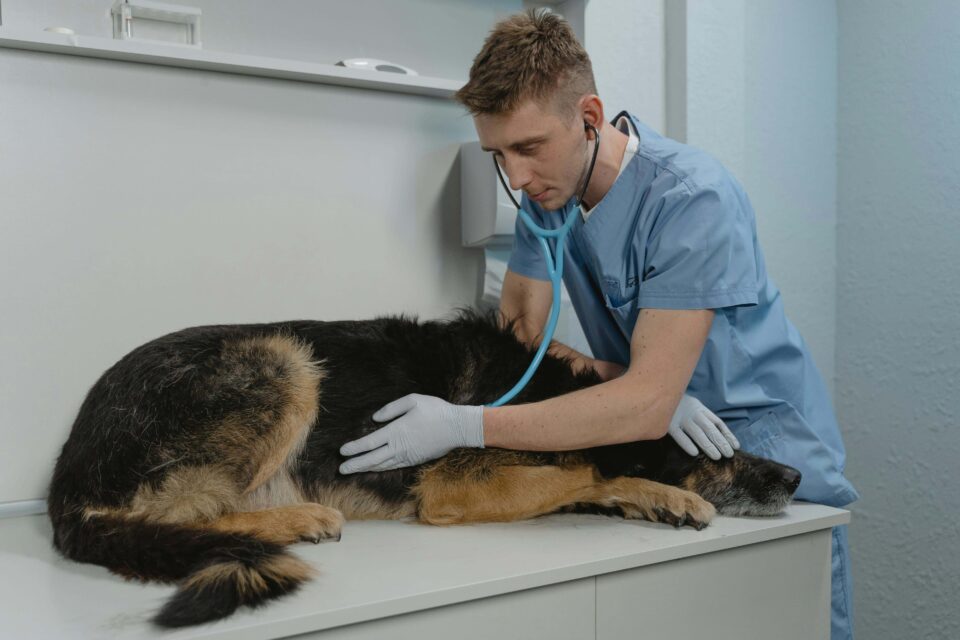Understanding the Danger: Why Can’t Dogs Have Chocolate?
Chocolate may be a favorite treat for humans, but it can be dangerous for dogs. Even small amounts can cause serious health issues, making it important to know the risks. Understanding why chocolate is harmful and what to do if your dog eats it can help keep them safe.
Key Takeaways
- Chocolate contains theobromine, which dogs can’t metabolize efficiently.
- Dark chocolate and cocoa powder are more toxic than milk chocolate.
- Symptoms of chocolate poisoning include vomiting, restlessness, and rapid heart rate.
- The severity of symptoms depends on the amount and type of chocolate eaten.
- Quick action is important—contact a vet immediately if your dog ingests chocolate.
Why Is Chocolate Toxic to Dogs?
Chocolate contains two stimulants: caffeine and theobromine. While humans can process these compounds easily, dogs metabolize them much slower, leading to toxic effects. Theobromine affects the nervous system, heart, and kidneys, making it especially dangerous.
Theobromine and Its Effects
Theobromine can overstimulate a dog’s heart, leading to irregular rhythms. It also affects the nervous system, causing hyperactivity and muscle tremors. Since dogs can’t break it down quickly, it stays in their system longer, increasing the risk of poisoning.
If you’re wondering why can’t dogs eat chocolate, it all comes down to their inability to process theobromine safely. Keep chocolate out of reach, and opt for safe, delicious alternatives instead.
Types of Chocolate and Toxicity Levels
Not all chocolate is equally toxic. Dark chocolate and cocoa powder have the highest levels of theobromine, while white chocolate has very little. Even a small amount of baking chocolate can be life-threatening for a small dog.
Chocolate Poisoning Symptoms
Early signs of chocolate poisoning include vomiting, diarrhea, and restlessness. More severe cases may lead to rapid breathing, seizures, or collapse. Symptoms can take hours to appear, so early intervention is key.

How Much Chocolate Is Dangerous?
The amount of chocolate a dog can safely consume is essentially zero. However, the severity of poisoning depends on the dog’s size, the type of chocolate, and the amount ingested.
Small vs. Large Dogs
A small dog may experience severe effects from just a few bites of dark chocolate. Larger dogs might tolerate small amounts better but are still at risk. It’s always best to avoid giving dogs any chocolate at all.
Additionally, the effects of chocolate poisoning can vary depending on a dog’s metabolism and overall health. Even if a dog does not show immediate symptoms, theobromine can remain in their system for hours, gradually causing complications. This is why immediate action is always recommended.
The Difference Between Chocolate Types
Dark chocolate and cocoa powder contain the highest theobromine levels, while milk chocolate has less. White chocolate has almost no theobromine but still contains unhealthy fats and sugars.
Dangerous Amounts by Weight
Toxic doses start at about 20 mg of theobromine per pound of body weight. Severe symptoms occur at 40-50 mg per pound. If your dog has eaten any chocolate, it’s best to consult a vet immediately.
Related: What’s Causing Allergies In Your Pet?
What to Do If Your Dog Eats Chocolate
Quick action can make a big difference if your dog ingests chocolate. Knowing the steps to take can help reduce the risk of serious complications.
Assess the Situation
Try to determine how much chocolate your dog ate and what kind. Note the time of ingestion and any symptoms. If possible, keep the packaging to show your vet.
Contact a Veterinarian
If your dog eats chocolate, call your vet immediately. They can determine if treatment is needed based on your dog’s weight and the type of chocolate consumed. In some cases, they may advise inducing vomiting.
Monitor Symptoms and Seek Care
Watch for symptoms like hyperactivity, vomiting, or tremors. If symptoms worsen, seek emergency veterinary care. Serious cases may require hospitalization for IV fluids and medication. Knowing what to do if your dog eats chocolate can help prevent serious complications.

Safe Snacking Alternatives for Dogs
While chocolate is off-limits, many safe and healthy treats are available for dogs. Choosing pet-friendly snacks ensures they enjoy a treat without risk.
Dog-Friendly Treats
Fruits like apples, bananas, and blueberries make excellent treats. Carrots and green beans are great low-calorie options. Always research human foods before sharing them with your pet.
Safe snacking and healthy treats can satisfy your dog’s cravings without the risk of toxicity.
Dog-Safe Carob Treats
Carob is a safe chocolate alternative for dogs. It has a naturally sweet flavor without theobromine or caffeine. Many pet stores sell carob-based dog treats.
Avoiding Unhealthy Ingredients
Even dog-friendly treats should be given in moderation. Avoid anything with xylitol, raisins, or excessive sugar, as these can also be harmful to dogs.
Signs That Your Dog May Be in Pain
Chocolate poisoning can cause discomfort, but other health issues may also contribute to distress. Watching for signs of pain can help you detect problems early and seek veterinary advice when needed.
Can Dogs Eat Other Human Foods?
Pet owners often wonder what foods are safe for their dogs. Some human foods are fine in moderation, while others should be completely avoided.
Understanding Food Safety for Dogs
Many foods that are harmless to humans can be toxic to dogs. Checking reliable sources before offering table scraps can help keep your pet safe.
Can dogs eat certain foods like stuffing, nuts, or dairy? It depends on the ingredients and portion size.
Related: Critical Signs of Stress in Dogs: A Comprehensive Guide
Promote Healthy Skin with White Tea and Lotus Shampoo
A healthy dog starts with proper care, inside and out. The White Tea and Lotus Shampoo for Dogs is designed to support skin and coat health naturally. Formulated with plant-based ingredients, it helps reduce shedding and strengthen fur while nourishing the skin.
This gentle shampoo is free from sulfates and harsh chemicals, making it ideal for dogs with sensitive skin. Regular use can improve coat texture and promote a healthier, shinier appearance.
Final Thoughts
Chocolate is toxic to dogs, and even small amounts can cause health issues. Understanding the dangers and acting quickly if your dog eats chocolate can make a difference. Choosing pet-safe treats and being mindful of toxic foods ensures your dog stays happy and healthy.
~Veterinarian Recommended